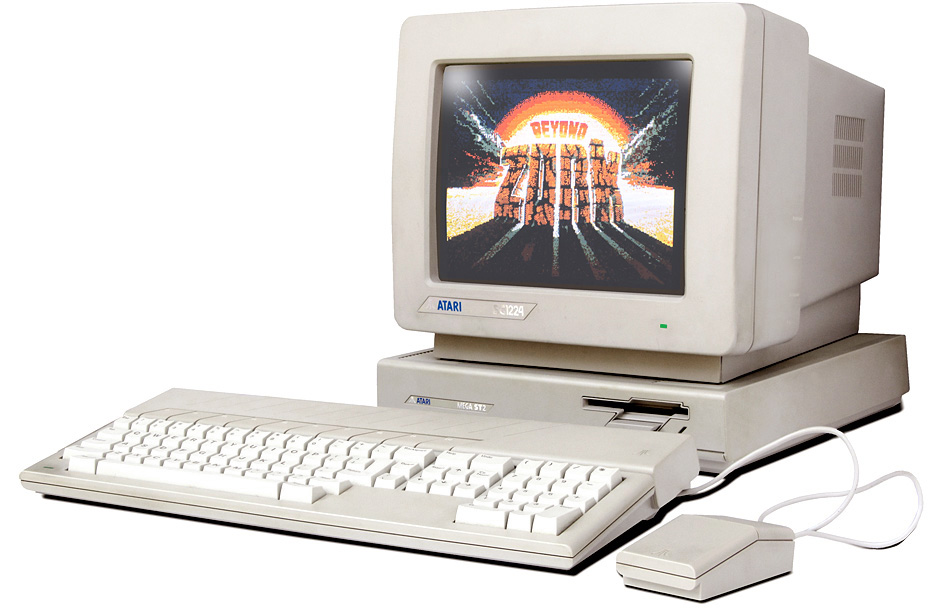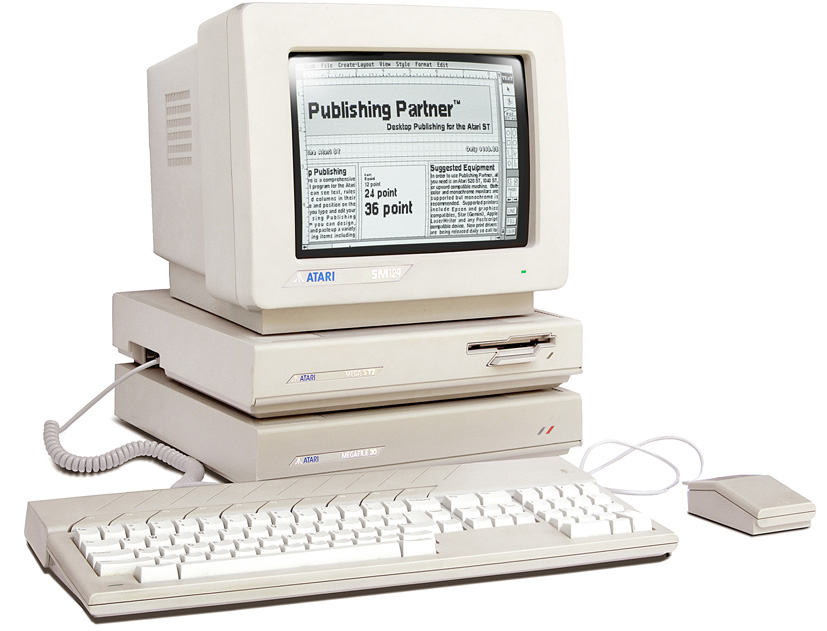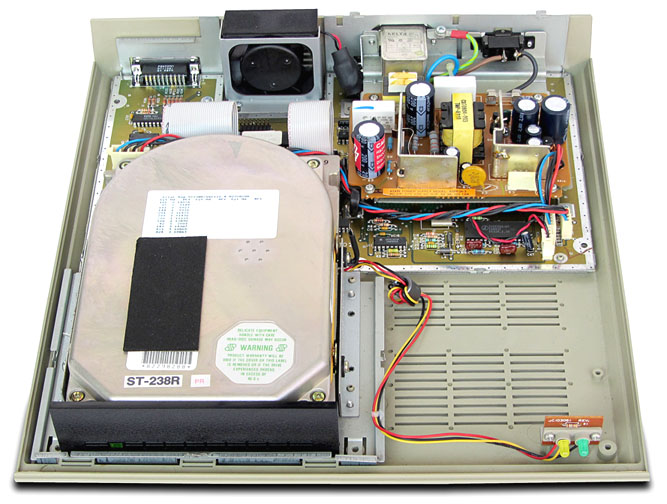|
|
|---|
| Atari Mega ST |
| Announced: | January 1987 |
| Available: | June 1987 in West Germany, October in USA |
| Price : | US $1,700 (Mega ST2), US $2,400 (Mega ST4)
Prices with monochrome monitor; add $200 for color monitor |
| CPU: | Motorola 68000 @ 8MHz |
| RAM: | 2MB (Mega ST2), 4MB (Mega ST4) |
| Display: | 320 X 200 - 16 colors (SC1224 monitor) |
| 640 X 200 - 4 colors (SC1224 monitor) |
| 640 X 400 - monochrome (SM124 monitor) |
| Ports: | modem, printer, MIDI, monitor
floppy drive, hard drive |
| Storage: | internal 720K floppy drive
optional: external floppy, external hard drive |
| OS: | Atari TOS/GEM |
| |
|---|
|

Following the Atari 520ST and 1040ST computer systems, the Mega ST systems were the third system in the "ST" line released by Atari,
and in this case, specifically designed for small business and desktop publishing applications. While the 520ST has 512K of RAM,
and the 1040ST has 1MB of RAM, the Mega ST2 and Mega ST4 have the most with 2MB and 4MB of RAM respectively.
As was the case with the Commodore Amiga, Europe - and especially West Germany - was Atari's largest market, comprising 75% of Atari's sales.
First announced at the January 1987 Consumer Electronics Show (CES), the Mega ST2 was available June 1987 in Germany,
August 1987 in the British Isles, and finally
in the United States in October of 1987.
Comprised of the Mega ST2 and Mega ST4, the Mega ST systems are a completely new design, but still basically an improved Atari 1040ST with
expanded memory, a real-time clock, an internal MegaBUS expansion slot, and a
blitter co-processor chip which greatly speeds-up block image operations and text.
The front of the system has a single 3.5-inch floppy drive, with a connector on the back for one or more external floppy drives.
Physically, the system is now an improved two-piece design, with a "pizza box" main unit which supports the monitor,
and a high-quality detached keyboard with better feeling key action.
The Mega ST systems are supposed to be completely software compatible with the earlier 520ST and 1040ST computers, with the
exceptions of programs which don't follow Atari's software development guidelines.
The Mega ST systems work with the existing ST-compatible 12-inch monitors - the SM124 ($200) for 640x400 (only) high resolution monochrome display,
and the SC1224 ($400) for 320x200 or 640x200 color display.

Released along with the Mega ST systems was the the SH205/MegaFile 20 and MegaFile 30
- a 20MB or 30MB external hard drive chassis - which sit beneath the matching main computer chassis.

Also introduced was the $1,500 SLM804 Laser Printer along with a desktop publishing software package.
For some reason, in the Spring of 1989, Atari released the cheaper "Mega 1" equipped with just 1MB of RAM.
|
|---|
Partial History of the Atari Computers |
- 196?: As an engineering student at the University of Utah, Nolan Bushnell liked to sneak into the computer labs
late at night to play computer games on the university's $7 million mainframes.
- 1972: Bushnell founded Atari with $250 of his own money and another
$250 from business partner Ted Dabney. They then created and commercialized the world's first
commercial video game, Pong. Bushnell was 27 years old.
- 1976: Warner Communications buys Atari from Bushnell for $28 million.
- 1977: Atari introduces the Atari Video Computer System (VCS), later renamed the Atari 2600
- 1978: December - Atari announces the Atari 400 and 800 personal computers.
- 1979: October - Atari begins shipping the Atari 400 and Atari 800 personal computers.
- 1979: December - Atari produces the first coin-operated Asteroids game machine.
- 1981: May - Atari announces the 8KB Atari 400 is being discontinued.
- 1982: January - Atari begins shipping all Atari 800 units with GTIA graphics chips, allowing three
more graphics modes than previously.
- 1982: December - Atari issues a US$55 rebate on the Atari 400, dropping its retail price to under US$200.
- 1983: January - Atari introduces the 1200XL home computer.
- 1983: May - Atari offers a US$100 rebate on the Atari 800, bringing its retail price to below US$400.
- 1983: June - Atari introduces the Atari 600 XL.
- 1983: June - Atari introduces the Atari 800 XL, with 64 KB RAM.
- 1983: June - Atari introduces the Atari 1450 XL, with built-in 300 bps modem.
- 1983: June - Atari introduces the Atari 1450 XLD, with built-in 300 bps modem and disk drive.
- 1983: October - Atari begins shipping its XL computers.
- 1983: - Atari cancels production of the Atari 1200XL, due to compatibility and other problems.
- 1984: July - Jack Tramiel, President of Commodore International, leaves Commodore in January and buys Atari.
- 1984: - Atari introduces the Atari 7800 ProSystem.
- 1985: January - Atari introduces the 65XE, for US$120.
- 1985: Atari introduces the 130XE, with 128KB RAM.
- 1985: Atari introduces the 130ST for US$400.
- 1985: Atari introduces the 520ST for US$600.
- 1987: January - At the Winter CES, Atari announces a US$1500 laser printer.
- 1988: September - Atari introduces the Atari TT.
- 1989: - Atari Computer introduces the Portfolio, a 1-pound DOS-based PC, which runs on three AA batteries. Price: US$400
Source:
Chronology of Events in the History of Microcomputers
| |
|---|
|
Return to the Obsolete Technology Homepage

Copyright 2024
This page last updated on 01/01/2025 01:22:51
All logos and trademarks on this site are property of their respective owner.
|


